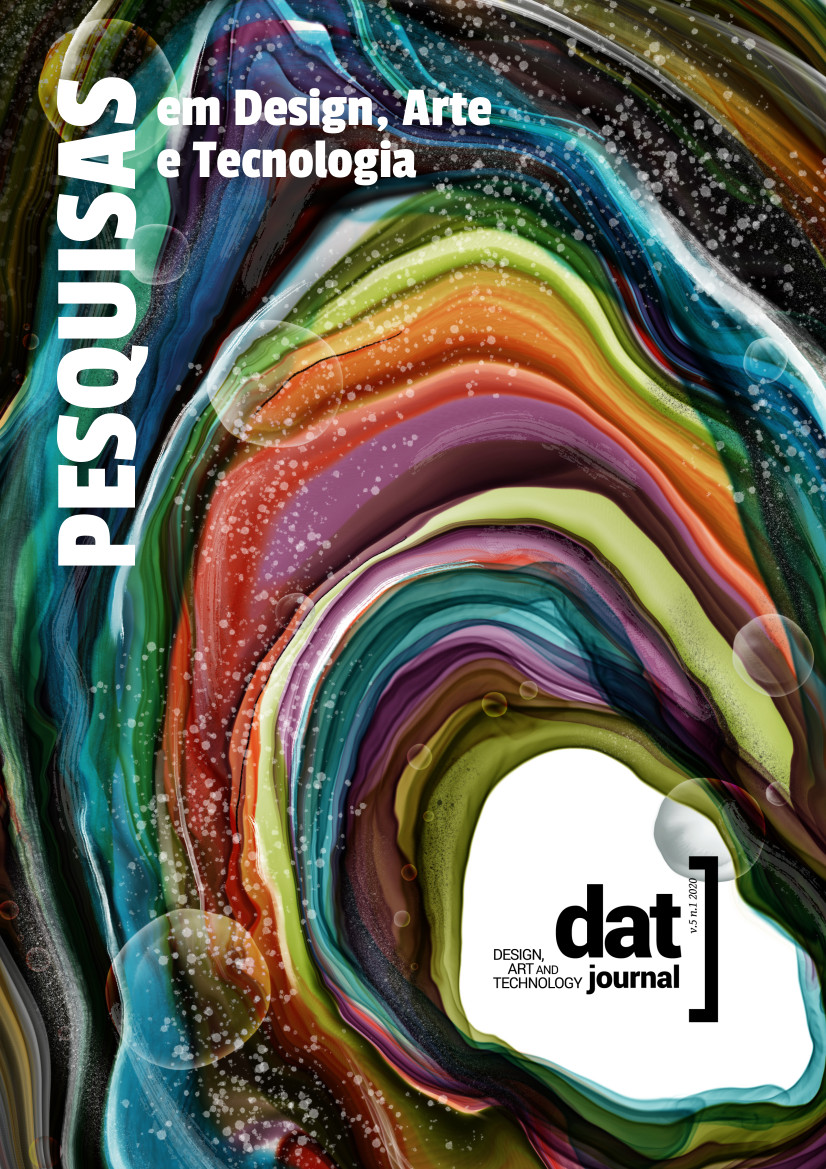(en)CANTO ESCONDIDO
DOI:
https://doi.org/10.29147/dat.v5i1.171Palavras-chave:
Instalação, Observatório, Migrações, Arte pública, Natureza/CulturaResumo
Este artigo resulta da reflexão sobre a construção da obra “(en)CANTO ESCONDIDO”, uma escultura/instalação que intervém in situ captando as relações dinâmicas entre materiais, paisagem e habitats de Coruche, em Portugal. O projeto apela às relações permeáveis entre natureza e cultura. O fluxo de presença/ausência dos animais que visitaram a escultura eram parte integrante da lógica da instalação. A obra pretendeu potenciar relações de observação dinâmicas em que o observador se tornava observado, constatando a sua evidente parte na natureza. “(en)CANTO ESCONDIDO” é simultaneamente um modelo de observatório urbano das migrações (insetos e pássaros) e uma construção arquitetural que invoca relações de convivência e partilha interespécie/intergeracional que incitam a interação e a descoberta de novas relações. A instalação pretendeu levar os observadores a um espaço de imersão, onde a realidade da natureza circundante se funde nas memórias e ficções de cada visitante. Foi uma experiência de partilha e um exercício estético e de reflexão sobre a sustentabilidade na nossa prática que se tornou uma experiência comunitária de partilha com imenso potencial narrativo e reflexivo.
Downloads
Referências
Guattari, F. (2000). The three ecologies (I. Pindar & P. Sutton, Trans.). London: Athlone Press.
Lopes, M. Manuela & Bastos, P.B. (2016) “Participação Colaborativa: Reflexões Sobre Práticas Enquanto Artistas Visuais”, in Mutações, confluências e experimentações na Arte e Tecnologia. Venturelli, S. & Rocha C. (ed), 2016, PPGARTE/ UNB, pp. 147-168. ISBN: 978 – 85 – 89698-50-4.
Mentz, S. (2012). After sustainability. PMLA, 127(3), 586–592. doi: 10.1632/pmla.2012.127.3.586.
Shapiro, Michael J. (2013). Studies in Trans-Disciplinary Method: After the Aesthetic Turn. New York: Routledge.
Shellenberger, M., & Nordhaus, T. (2006). Post-environmentalism. In M. Andrews (Ed.), Land, Art: A Cultural Ecology Handbook (pp. 196-199). London: Royal Society for the Arts.


























